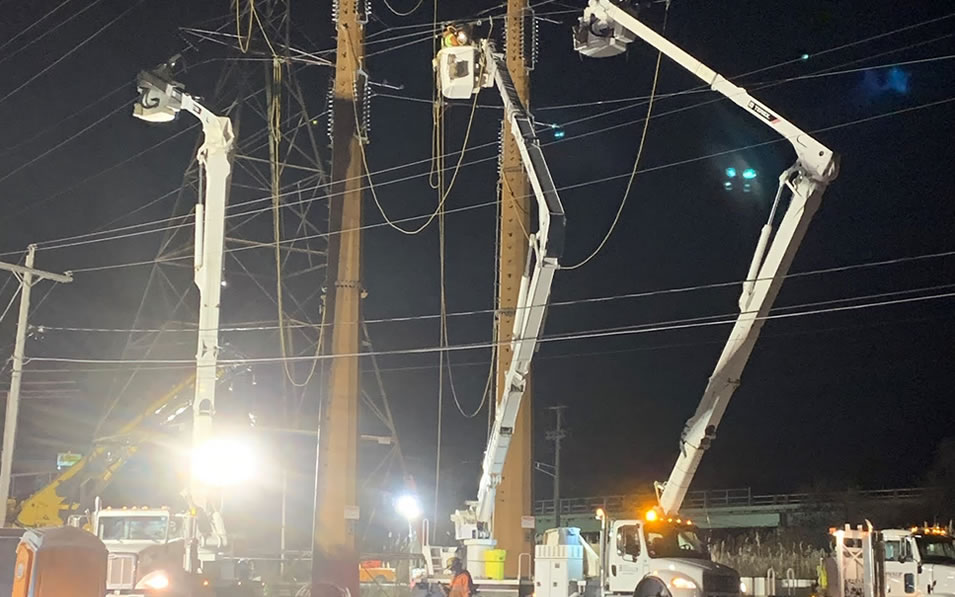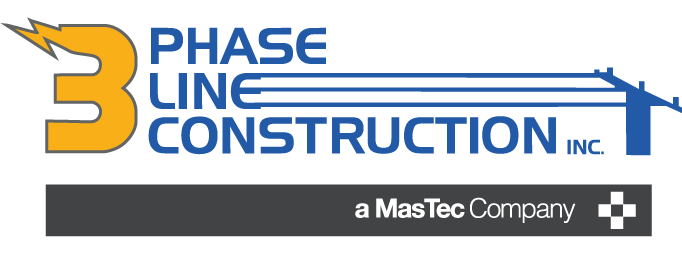
01 Oct Three Phase Line tackles 115kV line rebuild, while protecting environment
National Grid owns and operates electric transmission lines within existing rights-of-way (ROW) located in Central New York. As the contractor for National Grid, Rochester, N.H.-headquartered Three Phase Line Construction, Inc. is rebuilding the existing Clay-DeWitt Line 3 and Clay-Teall Line 10 115kV transmission lines. These circuits cross through the Towns of Clay, Cicero, DeWitt, and Salina in Onondaga County, New York. The project consists of replacing existing conductors on these two lines with new higher capacity conductors, replacing or modifying a majority of the pole structures associated with the lines, relocating a portion of the lines to the center of the ROW, and relocating other portions to a different ROW corridor.
The project benefits are increased grid reliability for customers receiving power from this line. By replacing older wooden structures and conductors with modern equipment, the new line will be less susceptible to outages caused by infrastructure failure. There will be less dependence on localized electrical generating facilities, thus promoting greater electrical generation diversity (e.g., renewables). And there will be greater power reliability for businesses and the local economy
When did this project officially start, and how long will it take to complete?
Construction began: August 2019
Anticipated project completion: 2021
How does it differ from others Three Phase Line has worked on?
This project is unique in terms of its size and the environmental challenges. It is what’s known in New York as an Article VII project. Article VII of the New York State Public Service Law sets forth a process to review the need for, and environmental impact of, the siting, design, construction and operation of certain major electric and gas transmission facilities. This project crosses several NYSDEC and federally regulated wetlands, three interstate highways, one state highway and one railroad. The total length of the new construction for this project is 14 miles, which is about 25 circuit miles. There are also about four miles of existing double-circuit line getting wrecked out.
Did Three Phase Line face any environmental issues?
Yes. Portions of this line fall within wetlands and sensitive environmental areas, so we have to strictly follow the Environmental Management and Construction Plan (EM&CP) which was prepared by the utility and approved by the New York Department of Public Service during the Article VII review process. Our concern is always strictly adhering to environmental regulations and processes during construction. The project limits of disturbance are meticulously mapped and delineated in the field and all construction-related activity must remain within those limits, no exceptions. Even a single tire track left outside the limits of disturbance could result in a notice of non-compliance with the permit.
What are some challenges that Three Phase Line faced when rebuilding these transmission lines?
There are EM&CP changes once work gets started. For example, the plan might call for building a timber mat road with a 90-degree turn. But in the field, we’ll see that if we do that, we couldn’t get a 100-foot bucket truck through the turn without encroaching on the wetland. We suggest changes to the utility, and they amend the plan. Then they submit it for approval. There’s turnaround time for the approval that we account for. That keeps us from getting off schedule; because we have experience with Article VII projects, we know how to keep work moving in other areas and stay on track and budget, while accounting for changes. Right now, we’re working through another EM&CP change that involves converting some temporary gravel roads into permanent, permeable paver roads.

